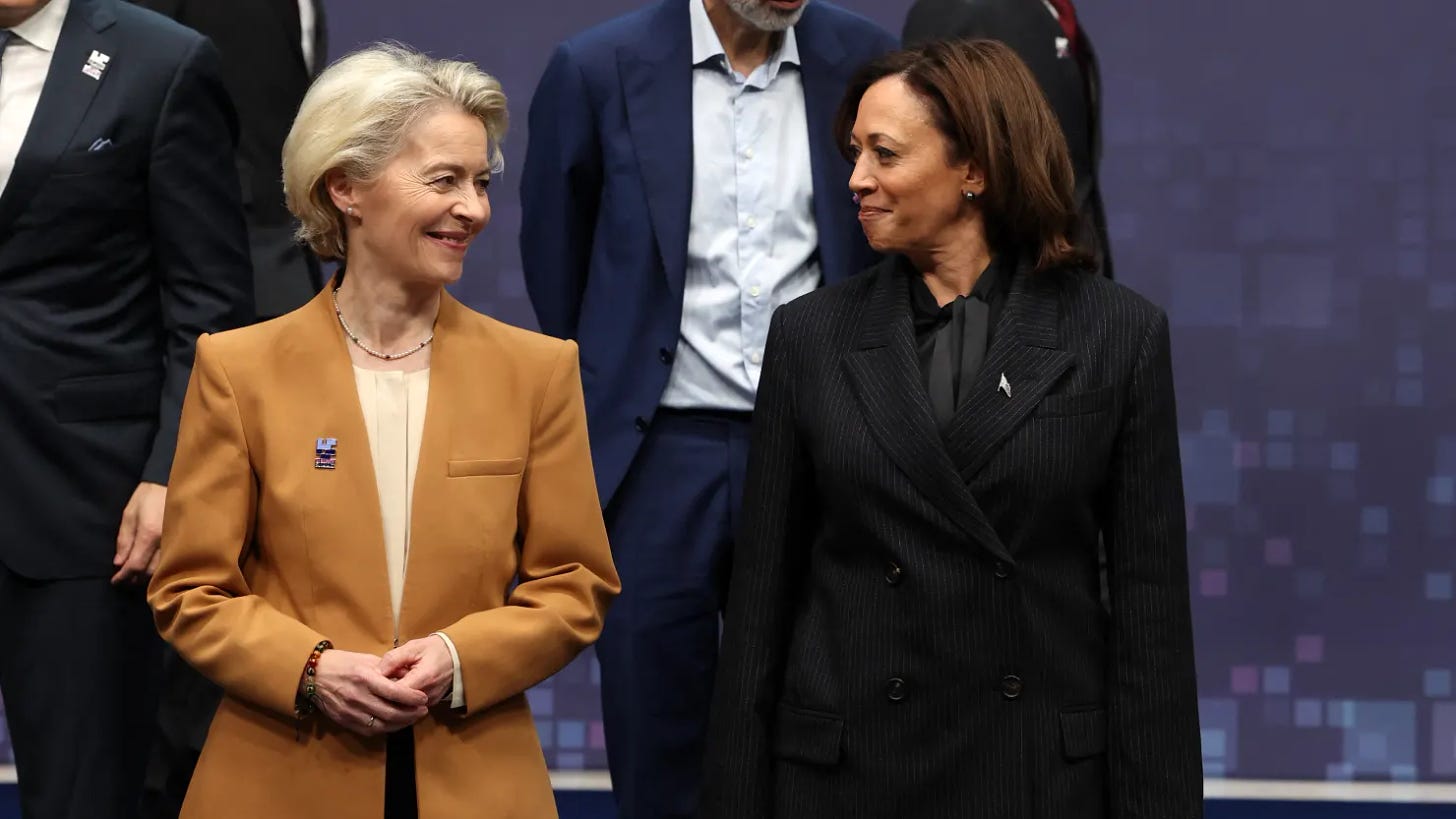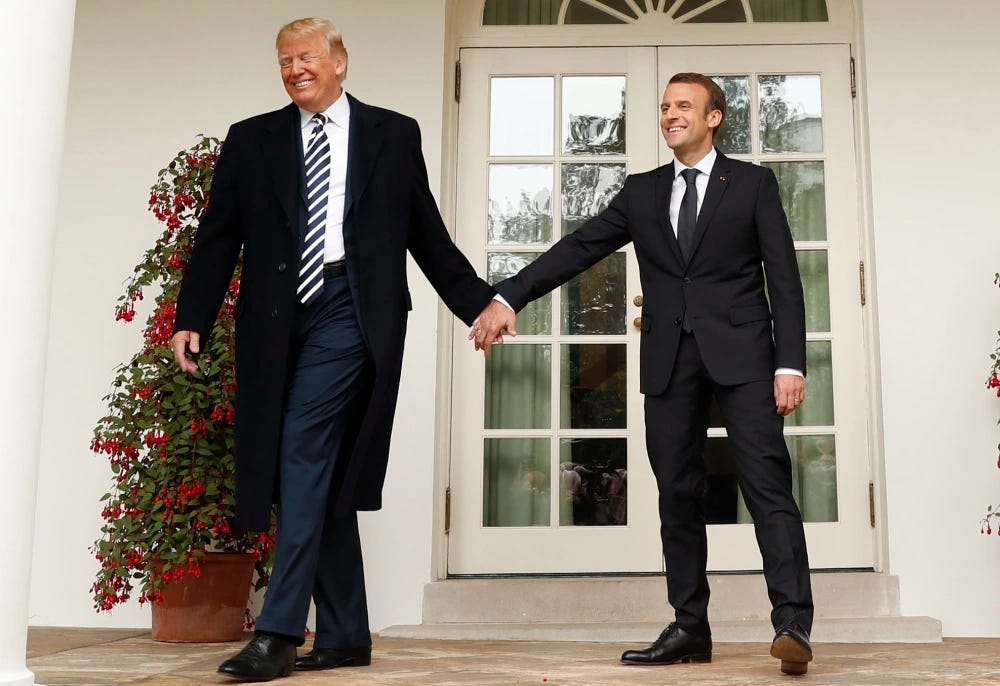What US Presidency Might Mean for Europe
The Impact on US-Europe Relations May Ultimately Be One of Nuance
Ever since Donald Trump announced his run for another term as US president, European analysts have speculated about the impact this might have on the region. While some insist that a Kamala Harris presidency would be a more stable and reliable partnership for Europe, perspectives from the left suggest this should not be taken for granted. In fact, “nuance” seems to be the best word to describe how a Trump administration would differ from a Harris administration when it comes to the relationship with Europe.
“Will something change? Not really,” says Roger McKenzie, journalist and analyst at Morning Star. “Will it change what’s happening in Gaza? Again, no.”
Europe to pick up tab on Ukraine war…
The war in Ukraine has been a focal point in this debate, with Trump suggesting he would quickly scale back support for Volodymyr Zelenskyy’s government if elected. But according to Olivier Goessens from the Workers’ Party of Belgium (PTB-PVDA), statements from NATO officials and US diplomats imply that the gap between Harris and Trump on Ukraine is not as wide as it might appear. While they may differ in approach, Goessens notes, their goals are the same.
Both potential administrations want Vladimir Putin to lose but without the US becoming physically involved. “It’s Ukrainian soldiers dying, not American,” Goessens says, and any administration will want it to stay that way. Ultimately, he argues, the US prefers not to bear the financial burden of the war either, and would rather shift focus completely to countering China. To get to this point, the US wants Europe to shoulder more of the Ukraine war costs—something that Europe was not able to do until now.
Joe Biden has spent the past two years pushing European countries to increase military spending, both by buying equipment and investing in production capacity within Europe, Goessens adds. “As soon as Washington believes Europe is ready, they’ll say, ‘We’re out; you guys are paying now.’”
… and face the cost of US economic strategy
European countries are already bearing much of the cost of sanctions against Russia, with limits on Russian gas imports driving energy prices up across Europe. These costs have impacted both households and industries, and they are likely to remain high—a situation that, according to Goessens, can partly be attributed to President Biden. “Joe Biden flew to Europe to negotiate with Ursula von der Leyen on a liquefied natural gas (LNG) deal, replacing cheap Russian gas with a far more expensive and even more polluting gas obtained through fracking in the US,” Goessens explains. “He made sure these high energy prices wouldn’t be a temporary thing.”
This push to sell US LNG to Europe is bipartisan, unlikely to be abandoned by either Harris or Trump. The energy price spike, together with rising food costs and reduced access to social services, has placed a heavy burden on Europe’s working class. These challenges are expected to continue under the next US administration and could worsen if it moves to attract European businesses by offering subsidies and lower operating costs.
One mechanism already driving this shift is the Inflation Reduction Act introduced under Biden, which grants millions of dollars of subsidies to European multinationals and promises lower energy costs if they invest directly in the US. By first making conditions for industry more challenging in Europe and then essentially offering incentives for companies to relocate to the US, both Democratic and Republican administrations are weakening job security in Europe. The effects are already visible in Germany, Goessens notes, where industry has been struggling for years. And, since many other EU economies are tied to German industry, these problems have reverberated across the region. “If the German economy is in trouble, then the Belgian, French, and the entire European economy is in trouble. And that’s what we’re seeing.”
If Trump wins, he may scrap the Inflation Reduction Act, but the approach of undermining European industry will continue. One expected measure is a rise in tariffs: Trump has pledged to introduce tariffs on all imports. This would not only hit European industry with high energy costs and weaker regional operations but would also reduce exports, potentially sparking retaliatory tariffs.

A further boost for the European far-right
Goessens suggests that regardless of who wins the US election, North American policy will continue to aim at pulling industry out of Europe. As McKenzie notes, the US will persist in its goal of economic dominance, and the fundamental structures of capital won’t change. Europe’s relationship with the US is also unlikely to shift significantly. In Britain, for instance, officials will uphold the “special relationship” with the US regardless of who is in office. “Keir Starmer will be among the first on a plane to greet the new president, whoever that may be,” McKenzie says.
However, a Trump presidency comes with specific risks. Unlike the Democrats, Trump has a strong disliking for multilateralism. “If you bring many people around the table, there’s going to be lots of compromise,” Goessens explains. “Biden negotiates with von der Leyen, but Trump only negotiated with individual national leaders, not with EU officials.”
If elected, Trump’s unilateral approach could further boost Europe’s right-wing movement. Connections are already strong, with leaders like Hungary’s Viktor Orbán openly supporting Trump. Policies advocated by these parties threaten a grim future for workers across Europe. If policies promoted by parties aligning with the Patriots for Europe group were implemented, for example, protections for human rights would significantly erode. “If a country wanted to kick out all the migrants, they could. If they want to make homosexuality illegal, they could,” Goessens warns. “Trump obviously wants this because a divided Europe, less able to navigate international affairs on its own, would remain more dependent on the US.”
As the situation in Europe worsens—partly due to US strategies—liberal and conservative parties are likely to continue their shift to the right, adopting language and policies once promoted by far-right factions. However, an alternative might emerge, Goessens suggests, as the people in Europe become more insistent in bringing to an end the region’s complicity in US imperialism. This demand has been growing stronger and stronger within movements, creating also an opportunity for trade unions to recognize that Europe cannot secure quality jobs, social rights, or democratic protections while remaining heavily dependent on the US. While such mobilization in trade unions won’t happen overnight—and will require strong support from the left—it could significantly impact Europe’s future stance, Goessens says.
Similarly, McKenzie argues that a further rise of the far-right will be met with an equally determined response from anti-fascist and anti-racist movements. Trump may accelerate the right’s momentum, he says, but it’s incorrect to assume that these forces are weak now. The essential response within Europe, according to both Goessens and McKenzie, is for the left to deepen its organizing efforts. Crucially, this means going beyond the mobilizations that took place in many parts of Europe over the past months to strengthen trade unions and give people hope in an alternative vision of society, in order to shape a different future for Europe.





